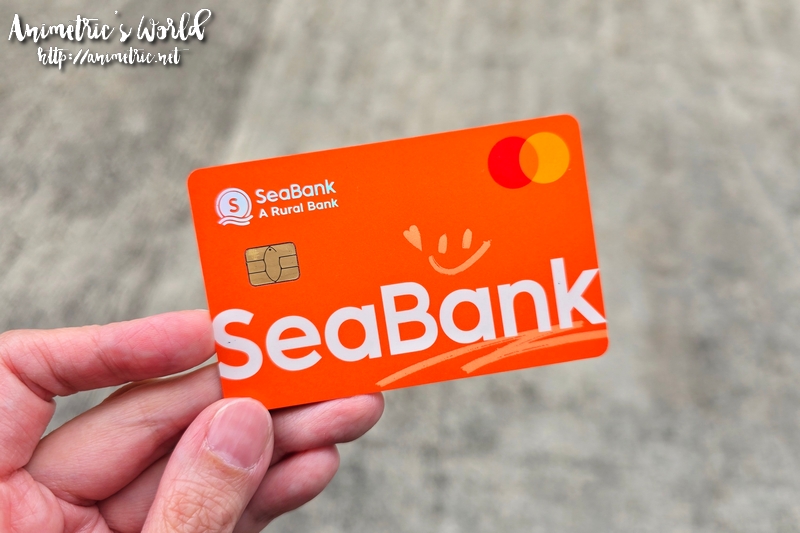Back in the day, like a decade or so ago, we would always bring US dollars and a bunch of credit cards whenever we’d go abroad. These days, we prefer debit cards from Seabank, GCash, GoTyme, and even Maya. Why? It’s because these debit cards do not charge a foreign transaction fee which can range from 1% to 3% of your transaction. Plus their foreign exchange rates are generally better. For example, when we went to South Korea last April, the exchange rate on Google was KRW 1.00 = ₱0.040. That was the exact same rate for Seabank (Mastercard), GCash (Visa), and GoTyme (Visa). There’s no foreign transaction fee to boot. These debit cards also let you withdraw from Korean ATMs as well as tap to pay where Mastercard and Visa are accepted.
 I went to see Lady Gaga’s Mayhem concert in Singapore last week and I decided to bring my GCash Card and my Seabank Card so I would at least have a Visa and a Mastercard. Of course I also brought my usual credit cards as back up. The first thing I did upon landing was check the forex rate. Both cards had the same rate in South Korea. Seabank recently merged with Singapore’s Mari Bank so I was expecting a better peso to Singapore dollar rate from Seabank. I wasn’t wrong. If you look at my screenshots above, GCash’s exchange rate was SGD 1.00 = ₱43.45 while Seabank’s rate is SGD 1.00 = ₱43.17. That’s a whopping 28 cent difference for every dollar. Needless to say I ended up using my Seabank Card 100% of the time in Singapore.
I went to see Lady Gaga’s Mayhem concert in Singapore last week and I decided to bring my GCash Card and my Seabank Card so I would at least have a Visa and a Mastercard. Of course I also brought my usual credit cards as back up. The first thing I did upon landing was check the forex rate. Both cards had the same rate in South Korea. Seabank recently merged with Singapore’s Mari Bank so I was expecting a better peso to Singapore dollar rate from Seabank. I wasn’t wrong. If you look at my screenshots above, GCash’s exchange rate was SGD 1.00 = ₱43.45 while Seabank’s rate is SGD 1.00 = ₱43.17. That’s a whopping 28 cent difference for every dollar. Needless to say I ended up using my Seabank Card 100% of the time in Singapore.
There are 2 more reasons why I prefer using Seabank Card abroad:
- You get a 100% cashback worth ₱200 on your first international transaction.
- You get a 1% cashback on every transaction thereafter.
I was earning cashback after cashback in Singapore with my Seabank Card which I could in turn use to pay for my train tickets. I could even tap the card directly to the MTR terminal, I did not need to buy an MTR card. It’s so convenient. What’s more, the physical card does not have a CVC. You can only look at the CVC via the Seabank app which you access via your passcode or fingerprint so that’s an extra layer of protection. I’ve used Seabank extensively in South Korea and Singapore, it has never been rejected. In fact I brought 0 SGD to Singapore and did not exchange a single dollar. I survived just fine.
 If you don’t have a Seabank Card, getting one is really easy. Simply download the Seabank app from App Store or Google Play and open an account. Use my referral code RL928355 and get free ₱50 when you deposit at least ₱1,000 and keep it there for at least 3 days. Seabank has a lot of cashbacks and rebates locally as well when you pay your bills or buy load. You can even use the Seabank Card to pay for Lazada purchases and get 1% cashback lol. Seabank also yields 4% gross interest for savings below ₱400,000. The interest is credited daily too. Seabank’s deposits are PDIC-insured for up to ₱1,000,000.
If you don’t have a Seabank Card, getting one is really easy. Simply download the Seabank app from App Store or Google Play and open an account. Use my referral code RL928355 and get free ₱50 when you deposit at least ₱1,000 and keep it there for at least 3 days. Seabank has a lot of cashbacks and rebates locally as well when you pay your bills or buy load. You can even use the Seabank Card to pay for Lazada purchases and get 1% cashback lol. Seabank also yields 4% gross interest for savings below ₱400,000. The interest is credited daily too. Seabank’s deposits are PDIC-insured for up to ₱1,000,000.
To get a Seabank Debit Card, just open your Seabank app and tap on the Cards tab. Tap “Get your physical card” then tap on “Apply now”. a fee of ₱160 will be debited from your account to pay for the physical card. For a GCash Card, you get debited ₱250.
I used to use only GCash Card for travel but Seabank Card has become my favorite of late. When we went to Lotte World, the Pokemon Gacha machines only accepted Mastercard so I was able to use this for gachas.
If you don’t have a Seabank account yet, I highly recommend opening one. I’ve had my Seabank account for 2 years already and it has served me well so far.
Like this post? Subscribe to this blog by clicking HERE.
Let’s stay connected:
